- Things To Do
- Events
- Food & Drink
-
Places To Go
- Winnipeg
- Churchill
- Eastern Region
- Central Region
- Interlake Region
- Parkland Region
- Western Region
- Manitoba North
- Must-See Destinations
-
Itineraries
- Island Getaway on the Prairies
- Wheat City Wanderings in Brandon
- Escape to the water and the wild
- St. Boniface Winter: Passion and History
- Follow the path to a story in Neepawa
- Unleash your inner Viking this winter
- Explore Clear Lake this winter like never before
- Breathe in the Whiteshell this winter
- Go North for a boreal forest escape
- Treaty Areas
- Where To Stay
- Trip Essentials
- #ExploreMB Blog
Navigation Options
- FREN
- Things To Do
- Events
- Food & Drink
-
Places To Go
- Winnipeg
- Churchill
- Eastern Region
- Central Region
- Interlake Region
- Parkland Region
- Western Region
- Manitoba North
- Must-See Destinations
-
Itineraries
- Island Getaway on the Prairies
- Wheat City Wanderings in Brandon
- Escape to the water and the wild
- St. Boniface Winter: Passion and History
- Follow the path to a story in Neepawa
- Unleash your inner Viking this winter
- Explore Clear Lake this winter like never before
- Breathe in the Whiteshell this winter
- Go North for a boreal forest escape
- Treaty Areas
- Where To Stay
- Trip Essentials
- #ExploreMB Blog
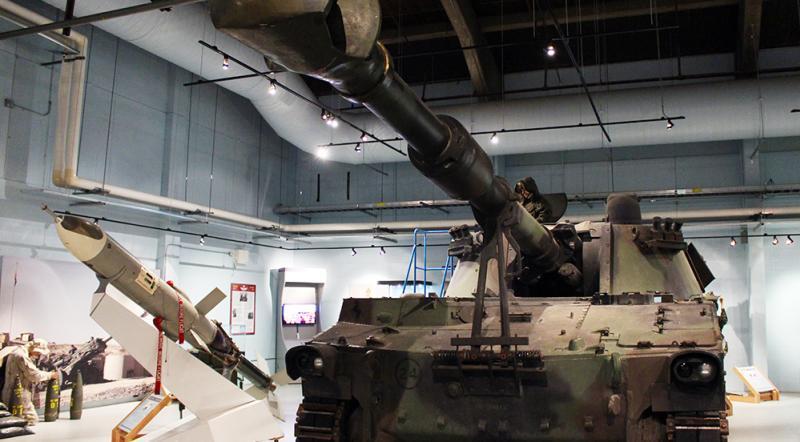
I’ll be the first to admit – I’m a little rusty on my war history, especially when it comes to Canada’s role in war. As such, a visit to the RCA Museum on the military base in Shilo, Manitoba was in order. I had little expectations of this small-town museum, but those tend to be the ones that surprise you the most. I was blown away by the quality of information (and the quality of displaying such information) at the RCA Museum. As the museum offers an extensive look at war starting from pre-colonization to present time, it was impossible to take in all the information, which in my view, is the sign of a great museum that warrants a return visit. I focused my visit on learning about Manitoba’s role in history, and on a national scale, the role that the battle of Vimy Ridge had on the world’s perception of Canada. Here are 8 things that I learned during my visit to the RCA Museum…
1. Manitoba has been home to full-time military units, both for defence and training, since immediately after WWI
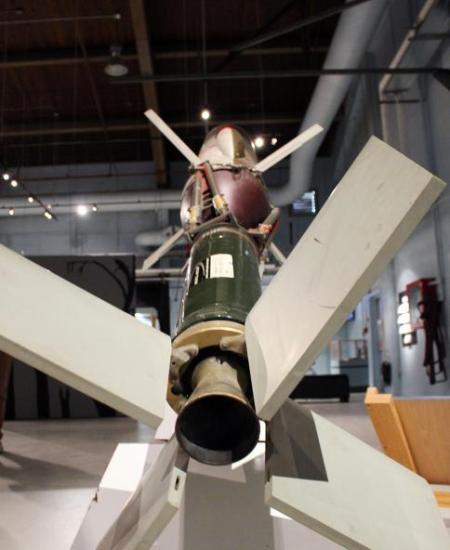
The regular army units have been stationed here since 1919, with garrisons in Winnipeg and Shilo. They continue to serve and be prepared to defend against ground-based security threats. The airforce has had full-time presence in Manitoba since 1925.
2. Riding Mountain National Park was once a camp for POW and Internees
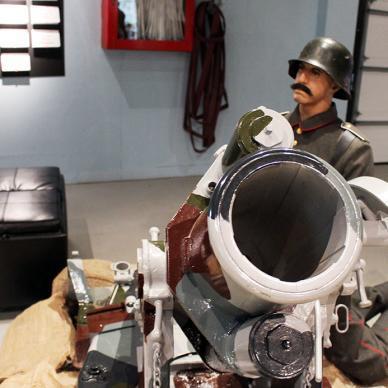
While it was considered to be a fairly comfortable camp, Riding Mountain National Park was home to a number of POW and Internees who were brought to Canada from Europe during WWII. The camp was guarded by Veterans Guard, a group of older men who fought in WWI.
3. Income tax was introduced as a temporary measure in 1917 to help pay for the cost of war
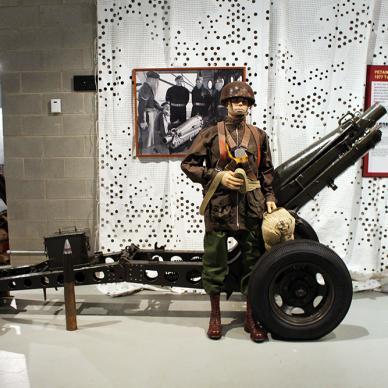
And that wasn’t the only way that Manitobans were affected by the cost of war. Rationing of food and vital supplies (for example, gas) was enforced during both world wars.
4. A number of lakes have been dedicated to those who lost their life as a casuality of war
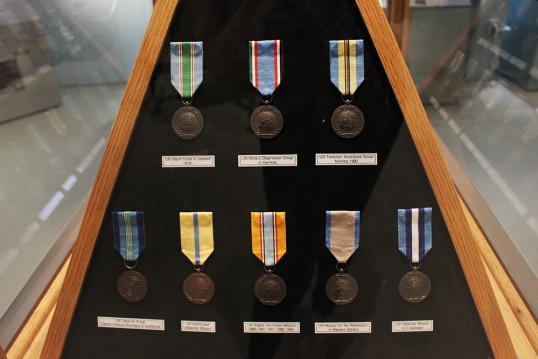
The “A Place of Honour” exhibit was particularly interesting, consisting of a digital screen with a map of Manitoba. I navigated the screen to see the huge number of lakes that were named after the individuals who lost their life as a casualty of war. At the end of WWII, the Geographic Board of Canada created a policy to use the names of decorated soldiers who had lost their life for any unnamed geographical features. By 1955, the policy expanded to include any casualty, decorated or not. There was a huge effort made to reach out to the families of these soldiers, with over 3000 of 4246 families having been located and given Commemorative Name Certificates.
I decided to investigate into an area that I frequent each summer as a starting point, and learned that Shayler Lake (south east of Lac du Bonnet) was named after an individual called Private Shayler in 1973.
5. Tens of thousands of Manitobans came home permanently disabled after the war
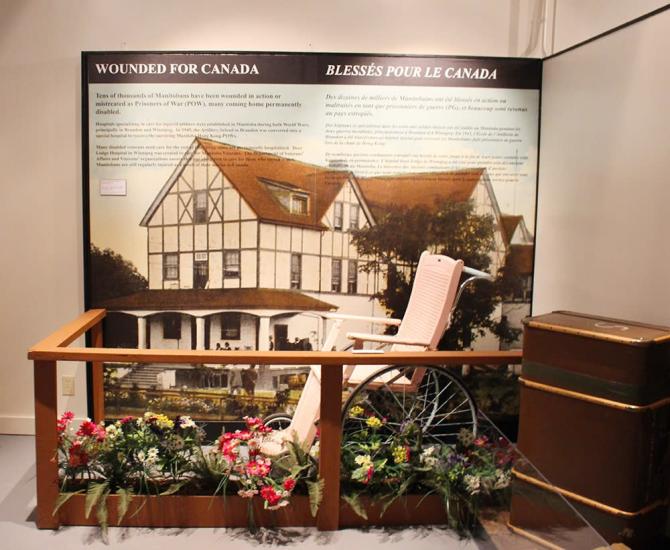
Brandon and Winnipeg housed the main hospitals that were dedicated to caring for injured soldiers during both world wars. In 1945, the Artillery School of Brandon was converted into a special hospital to care for the surviving Manitoba Hong Kong POWs.
6. Manitobans have contributed money and skills to Canadian military production since 1914
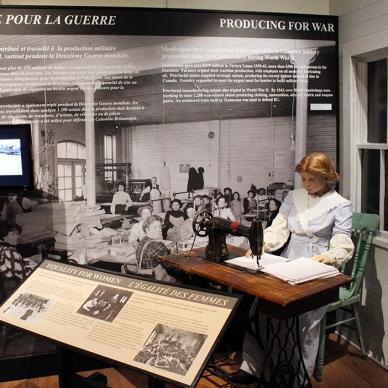
Manitobans gave an astonishing $79 million in Victory Loans (between 1939 and 1945), which at the time, amounted to more than $500 for each person who lived in the province. At the same time, farmers picked up wartime productions and provincial mines produced the second highest amount of zinc in Canada, used as strategic metals. Manufacturing output was at an all-time high, and by 1942, over 38,000 Manitobans were pitching in and working at some 1200 war-related plants to make clothing, ammunition, aircraft, vehicle and weapon parts.
7. The effectiveness of artillery fire helped to ensure victory at Vimy Ridge
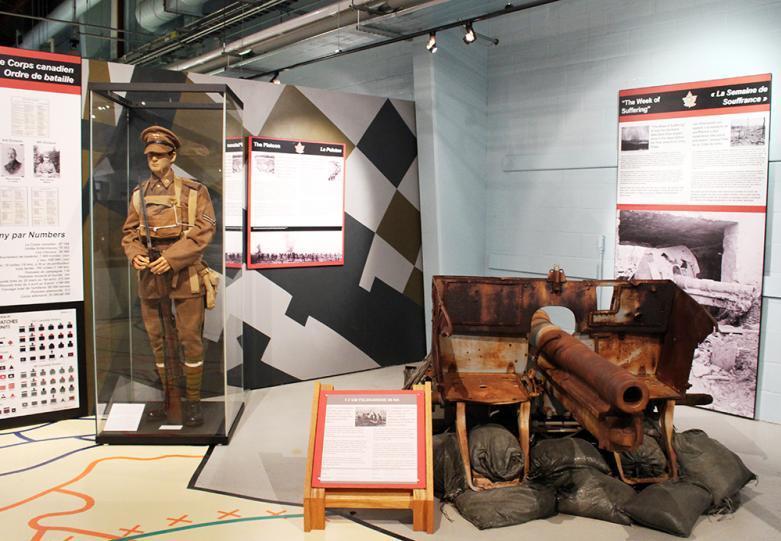
New technology and methods, and the willingness of Counter Bombardment Commander LCol Andrew McNaughton to try such tactics, is considered to be one of the greatest factors in winning the battle of Vimy Ridge, a conflict fought during the WWI against the German Sixth Army. The Canadian divisions were able to locate gun position using a number of location techniques such as “flash-spotting” and “sound-ranging”. Aircrafts were used to take photos to assist in finding target locations and direct artillery fire to places otherwise invisible to those on the ground.
8. Vimy Ridge was the best planned and executed battle in Canadian history of the Great War
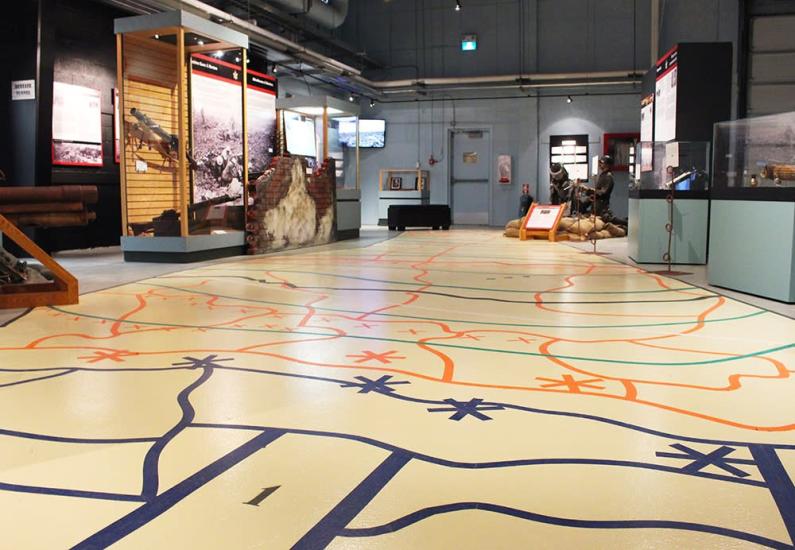
A number of monuments were erected in honour of the victory, such as the Canadian National Vimy Memorial in France where the names of 11,285 Canadian soldiers are engraved. It is now a Canadian National Historic Site, drawing in millions of visitors each year. The current exhibit at the RCA Museum, In the Footsteps of Vimy, depicts the battle and the measures taken to achieve success. The exhibit has an interactive map built in on the floor that helps children understand the progression of the battle and the lasting impact it had on the perception of Canada.
Practical information
Summer hours
10:00 am to 5:00 pm
Admission costs
Serving CF & RCMP, Silver Cross Recipients and children: Free
Adults: $6
Veterans (inc. RCMP), seniors (65+) and students (6-18): $4
Group Rate (10 or more): $3
Guided Tour Fee: $25
Where
Building N-118, Patricia Road, CFB Shilo2.5 hours from Winnipeg25 minutes from Brandon

